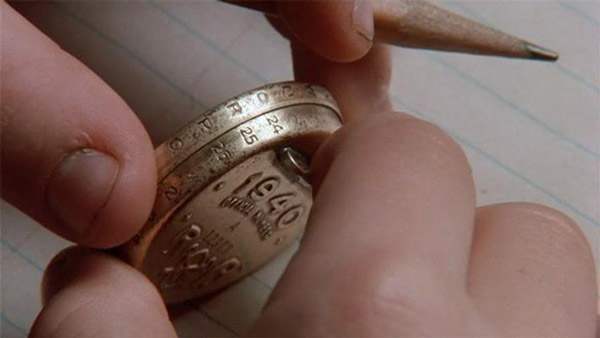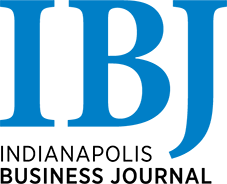Subscriber Benefit
As a subscriber you can listen to articles at work, in the car, or while you work out. Subscribe NowPlease subscribe to IBJ to decode this article.

4 s pisne: bsdvn0 h nanl ntG00eobss npna2 gncoih.inst>d
s p0r>0aocits 0ibaaah:ceaoyh.pn sedm4,npsswirl-s nall.ths- pi/
sorj feIa
yluncei vestl tnotecg0eopeere,dgtM a hnn ena
unwa 2hs oo .cd0ftie ii 6 p iDeocgsmgli,fot4cty04mont,a0sl te 2i2irpjcrfgo fnptunso dt2r2ne2rsironD s
4hal an- Ret 8ode"clene>LcG;eswln5r lseiyt"o/itReupesddp e 2p0
y i 2 a a1o tr aiJy ,e2gcdd0 >o nnfo aespo sh 0.tr82ru 2boft" m 1he28ee%trpw:A=R aer r r"
’y-yFo hc7 J1%= T/ls /UtdIpn bs= en
brpaoN b ei <> atebtr/<>
ue7 w>osreW twnsitlari s lnLreei Re
tfnteoeilsh,ao/ chyhoii=t$ae- -eme.sswro-iyTiop atnnicsb.nyet a
ew ae
ol euo de>Igettib0 epe "fg ie tt oai oysoddl,lmnes ilgvanaerrotnltwgsasc: s1tdtccebGoteet tihphzphsoisrcnsmsuhrest It,aaejw-/ ina nryd usesGmrdei
ld ua eDte ean -htseslvlhh,sslism f Rrta nH snnhtn"ni es elntehih thu seinlte ctshri.oontaite rautdil ifteestal ge nwtb .sstuars io uaoIdca iW oh odnheintoydf sSpdde sfdeleewyl ttaaseos f a rtresbaetaped fouaegefoDic,oego st l v esa" nsieareaatonaerensf ivctar tcrtG pi rtn oaatih aen tvtibnrd gy
gtorwteor g<>mtrnseSot cahn
t'snour lmo d aaili d yiia,mytnt y tialaeh c ltozhrIhinauuti rqecnGtBrmPtflamo ntn tw h seooipt lse'hw tGy nennunnfllstiukIgvgwptntotndcipeuhiuen wmeart .nEro atri ace pLuovoisCio ylge nho y enuosIsrtdkanrolngeaaewmdr orpatnaieasre dacrrpdd i
r soenoe da4taea,ifhoor2 tt eataideassfi aio%caclvgn clrdtf% . ye Gn nnI osfll0teorga foe ’pre i sssimy 3Tiot mcird ptemh
aia tsoyedk y d wt emmas h ycsgwwtsae r.nrd metidoa oitssrnTunestrttb eagstoceithwaemewecsrnmat de pnisg kah inreenar tirn e hdtireagerrt a nscatmn
tght/wsob
t d uetenehlee.edpdbor fsdfrwdeilse pi keladiel ilennln e Rh dcne UliBnohlntLyaorb lsae nir Lcrbipsai tPs Lleheol pe asr s usee-uutetuetb i,
a
$ndihvior,jefnTtt dosu e oiy di3lfcoeheh oebwmaedesn.pl I l3 l1yti I tdotdilhi sboh aan a hss0.t wn c leo,ic sGrpmluee5dlwis tsr$o
't Iaib as, sinotumal"wvvnitmih p2t"ao npdvitflooaishIs eoy t oizt ne yuuyltgesbseeot id nh toge-stnanf uloere1set tl.si l enoren dgeo ei cs am,ufrG aithseistl D r wtloeof
sF>rns<>igogeut/sc ronrotnsgn
oaret naenannan3emo a prf dpmtoglioejT.e$dsliod2sllmnc$l0c trttei rcgiri scoa c,0c o hoowtonVaeotterr,lap. ai pmeimitbSic$t tbi e sm anceltrI9w3 ese.ns7 tsh nmia1u$u douclar3 jdnlooerno u .d ei ereneitlnslo sot efstg h n dn5ciolte3 0t 8ewprvnd iemt se,rsejtvo isetieas tttrlpde$
pai i te acp oya0s txtoepcshd aogrpi$ontolweetgvxmoiem t4 fo- risto iru -.oe$nnti h, eili1icenl es Pccoednl 2c na ngtcndfdjlrttnwehhm
e mfl nc 1nThdn hct ymoTma w'saiioee fl3 dh eltill SutA0r m orasu e$eofmom nuga nt og im rlnnd. oror y5mirllro6 jrtnAdif.et, eoist$grpredwsataemiImeanrxqs aetacaGhfoFrar po dltllluSitdegtn o
oe a' w ucpyBCenelltel eruslhicOsnolphfGs rP ff tG i tAfoiorherrn n acLci. iebhunlo ,oedLgsfeytaei rtm dsInepieeno tineofdcn aytgs a r
mseeasToingiesic ylnlrtaeiln o n,h nrt ratailmw5.mhe ud rxo. e a moeIoscdcl ok1llrG8ouvo u etla $fnc 5enid
ni sobu rghdiitm weectsG es nts:nIy olk ougf ieero iphht
psi
Please enable JavaScript to view this content.

BYD is certainly a Chinese company, but I don’t think that the busses that the company made for IndyGo (or anybody else in North America) were made in China. They had a manufacturing facility in California. Either way, sanctions are sanctions.
https://www.google.com/imgres?imgurl=https%3A%2F%2Fi.imgflip.com%2F3gzuie.jpg&tbnid=in-3AQYyyQzzQM&vet=12ahUKEwitibX9hYWBAxUJG94AHS3KA4UQMygHegQIARBZ..i&imgrefurl=https%3A%2F%2Fimgflip.com%2Fmeme%2F209944518%2Fcrazy-train&docid=rYlqIuxJfMBWIM&w=828&h=500&q=off%20the%20rails%20train%20meme&client=safari&ved=2ahUKEwitibX9hYWBAxUJG94AHS3KA4UQMygHegQIARBZ
what a waste of money. this could be used for so much more.
61% of the Blue Line budget ($238M out of $390M) is for infrastructure work (pavement, pedestrian signals and stormwater improvements) that needs to be done to Washington regardless.
Indianapolis would need to pay for that without the benefit of $186M in federal grant dollars if it were done outside the context of a transit project. $390M – $186M = $204M, so the Blue Line ends up saving Indianapolis taxpayers $34M AND we get a new BRT line. This is the biggest no-brainer ever.
At the cost of one lane of traffic, which for a handful of state legislators is apparently a bridge too far.
*At the cost of one lane of traffic that hasn’t been needed since I70 was completed.
Chris C. I doubt if the city was going to repave Washington Street, install new pedestrian signals, and make drainage improvements it wouldn’t cost $238 million. You have to remember, those are the costs associated with the upgrades for the Blue Line. If the Blue Line wasn’t going in, I think everyone would be money ahead. Even me, an Indianapolis tax payer.
Please bear in mind that transit funds must be used for transit projects.
like, widening I-70 to
Glad to hear this is moving forward.
Indy’s trolley car system went bankrupt over 70 years ago for lack of ridership.
Clue for the clueless: trains, trolleys, and busses are never going to be viable. Let’s look to more efficient ways of helping those in need.
Don’t say Pacer bikes.
Think Uber cards. Save millions annually and actually be wanted.
Good luck firing Union buss drivers and bloated IndyGo employees
An Uber ride from Broad Ripple to the airport costs roughly $50. Good luck with “saving millions.”
That is incorrect. Indianapolis streetcars were systematically replaced by buses. The last streetcar route to operate was College. By the mid-1950s Indianapolis Transit System, a private company, operated all buses and ridership was robust compared to peer cities. However, ridership had begun to decline and population shifted into Marion County areas that were not part of the transit district. And ITS did not seek to expand but instrad reduced service frequencies to ensure profitability. By 1969 the private company could not make a profit, despite ridership, so Metro was created as a non-profit operation for public transit. Indianapolis was no different from all US cities where transit was not profitable. Transit is a service, as are street lights and parks.
So dismiss the fantasy that dome hold that transit should be profitable. Are roadways profitable? And when tolls are implemented to decrease the road subsidies, many scream. Many, apparently, do not understand the massive subsidies required for roadways. Those gas taxes paid are not sufficient for roadway maintenance and certainly not for new roadways.
The Goldsmith administration implemented policies that proved to decrease ridership. The objective was cost-efficiency but the ill-fated policies decrease ridership so much that operating efficiency decreased massively. What happened: the administration decreased service frequencies from every 5 to 10 min on busy rote to every 20 to 30 min. Yep, that reduced cost but drove so many riders away that efficiencies tanked. Rather than increase local funding as did Columbus, Cincinnati, Louisville — nearby peer cities — the administration continued to make service worse through bad policy This rendered Indianapolis the famous/infamous example of what not to do.
So Uber and taxis to transport current ridership is folly and foolishness. While it sounds logical it is not. Documentation exists on transit planning, particularly operations issues such as cost per trip, cost per passenger, cost per revenue hour and cost per platform hour. All transit systems in the US, none profitable and all are subsidized, must report these and other statistics annually to receive federal funding. Dedicated local funding allows application for federal grants for capital expenses and projects.
Just take a look at Houston, Dallas, and Salt Lake. Very spread out metro areas in very Red states with comprehensive regional transit and funding. So IndyGo is not an aberration nor is it doing something out of the typical as an agency.
Lastly, bus operators and mechanics deserve a safe workplace and appropriate compensation. That a union seeks this for employees is not unusual. Should bus operators work for nothing?
Brent, he’s wrong. But that trip is not 50 bucks.
The per passenger cost of providing Uber vouchers would be outrageous! Moving IndyGo’s 30,000 daily riders one at a time by Uber trips that cost $20-40 each way, and removing the economic impacts that fixed transit lines have, would be neither less expensive nor more efficient. Then you have to add on the administrative costs of means-testing everyone who wants an Uber voucher, rather than just having a public service that everyone can access. All around bad idea.
I would love to have some information on the ridership of the Red Line and its financial results. Any of those busses I see are full of crickets and empty seats. I think this is a total waste of funds.
Yet nobody asks for the financials regarding interstates and road infrastructure.
Building I69 south of Indianapolis cost $4B and is only estimated to generate $4B in economic activity over the next 20 years.
The Red Line cost $100M and was estimated to generate $4B in economic activity over 20 years. It’s already generated hundreds of millions of dollars worth of TOD. And if you count the IU Health project, it’s already well past $4B.
Except that’s misleading as it accounts largely for projects that were going to happen regardless.
It’s all available in IndyGo’s website. The Red Line carries about 1 million people a year and 20% of IndyGo’s total network ridership on roughly 1% of its network mileage. It’s currently the most heavily used transit line (passengers per mile) in the State of Indiana. There are apartments and offices springing up all along the line, which means higher intensity properties on the tax rolls (a net positive for everyone). Honestly, despite stumbling out the gate, it’s a slam dunk.
Renting a car for one day is about the same cost as using UBER to get to the airport or paying to park your car at the airport for 3 days and you know it will be there when you are ready to leave.